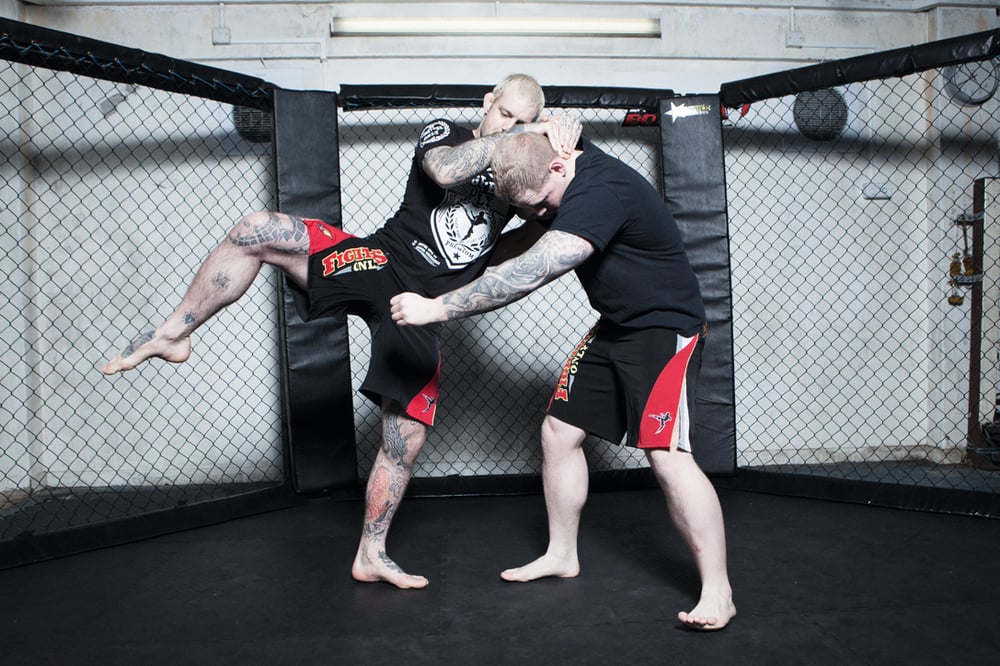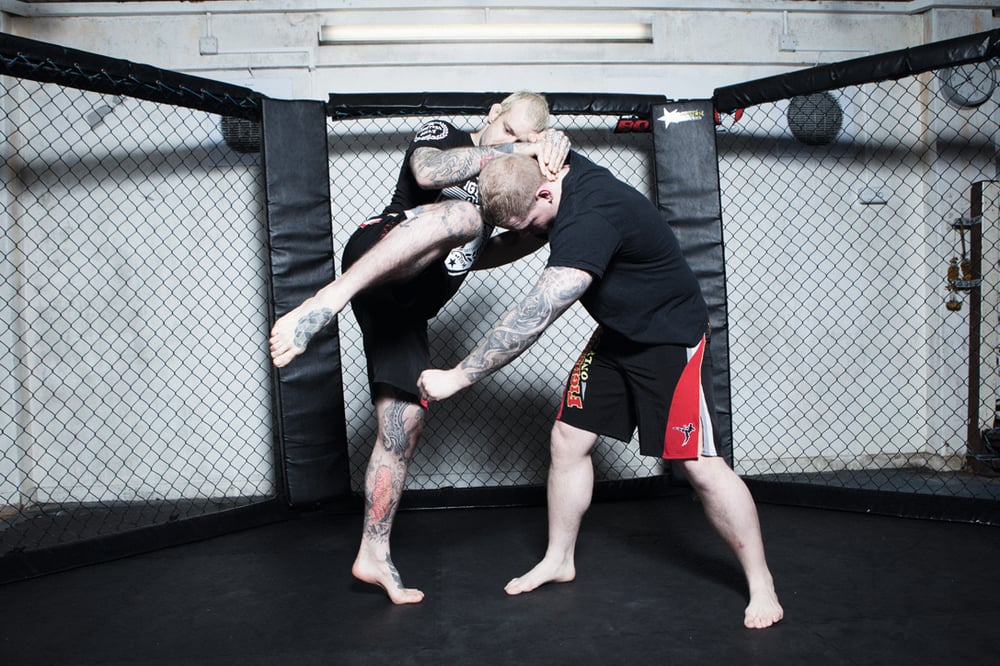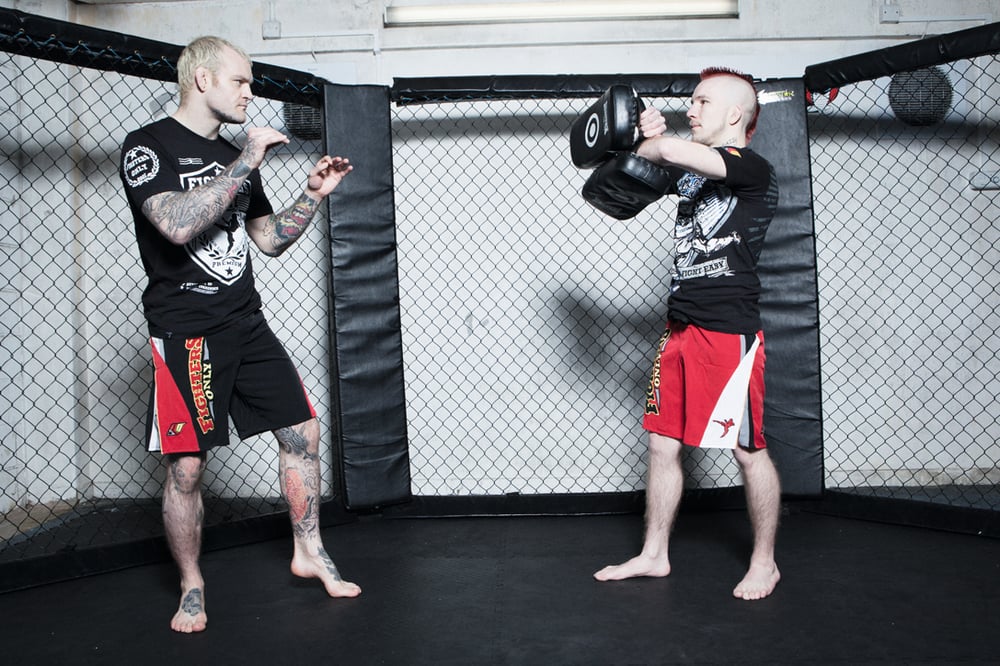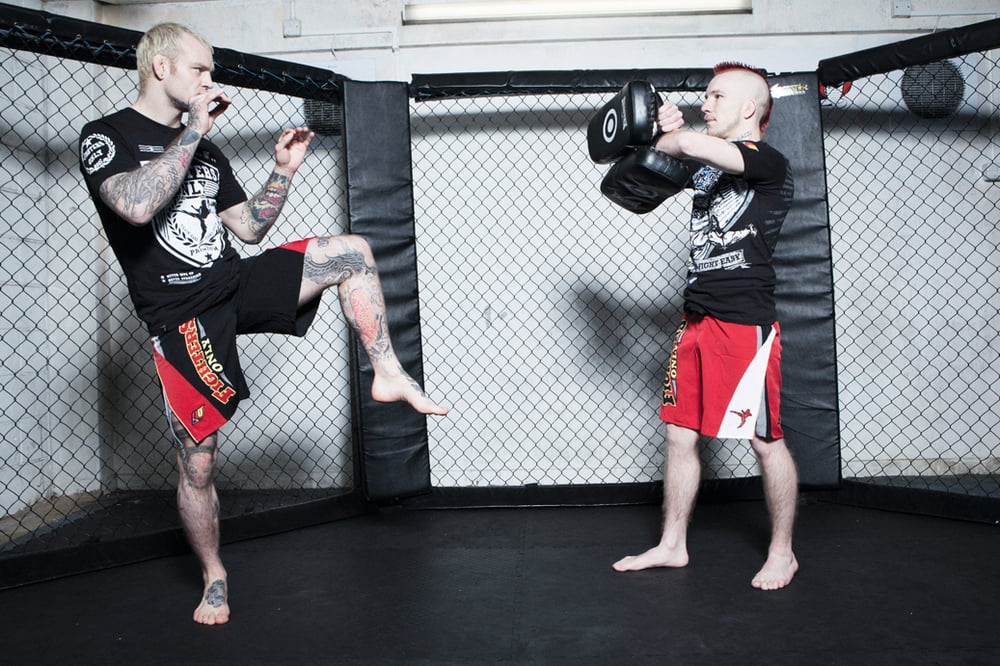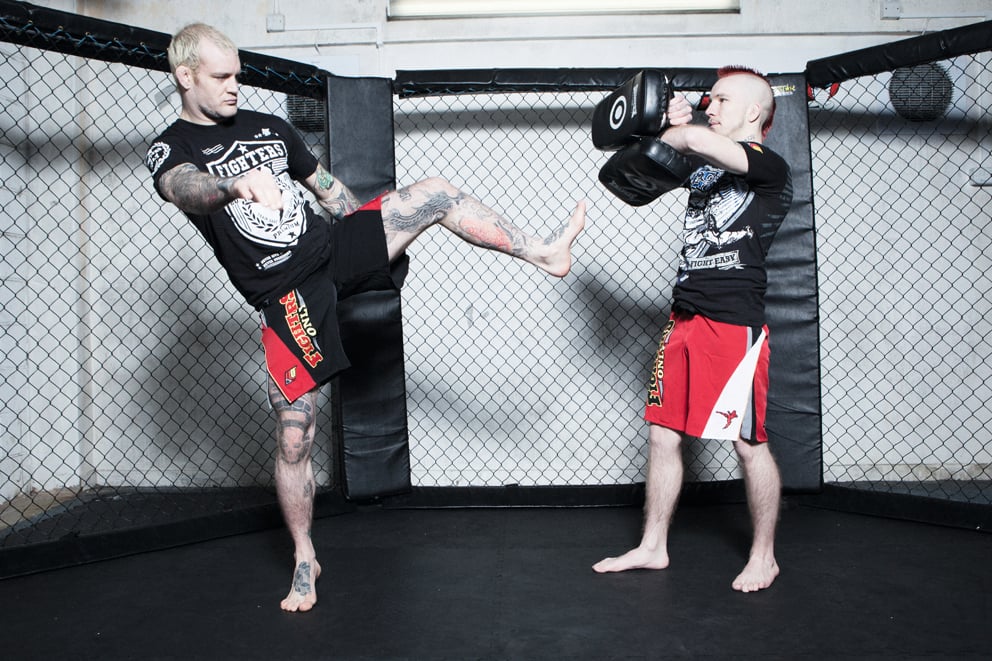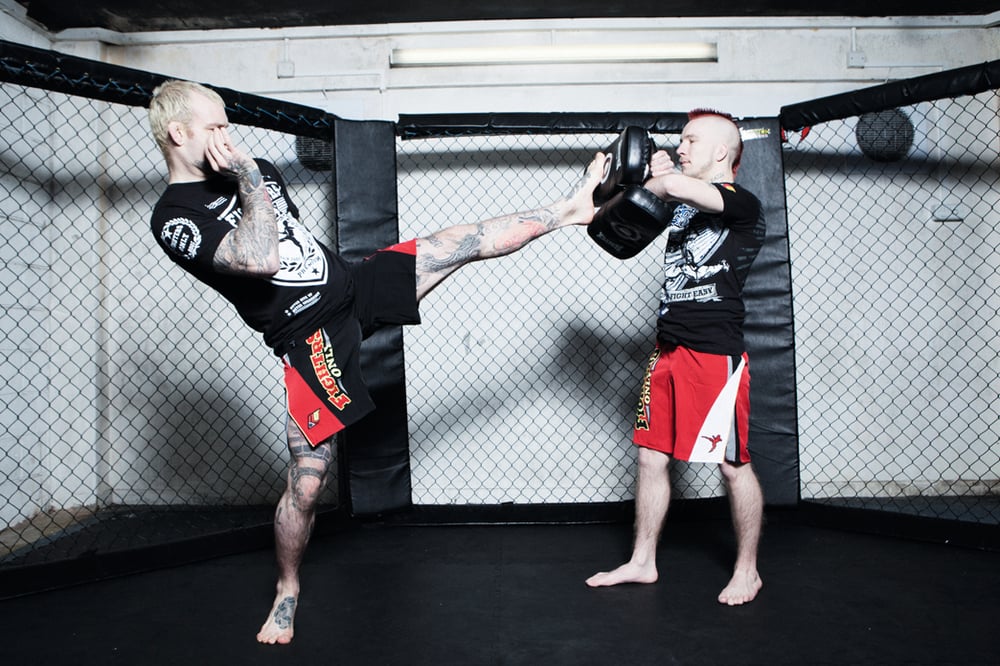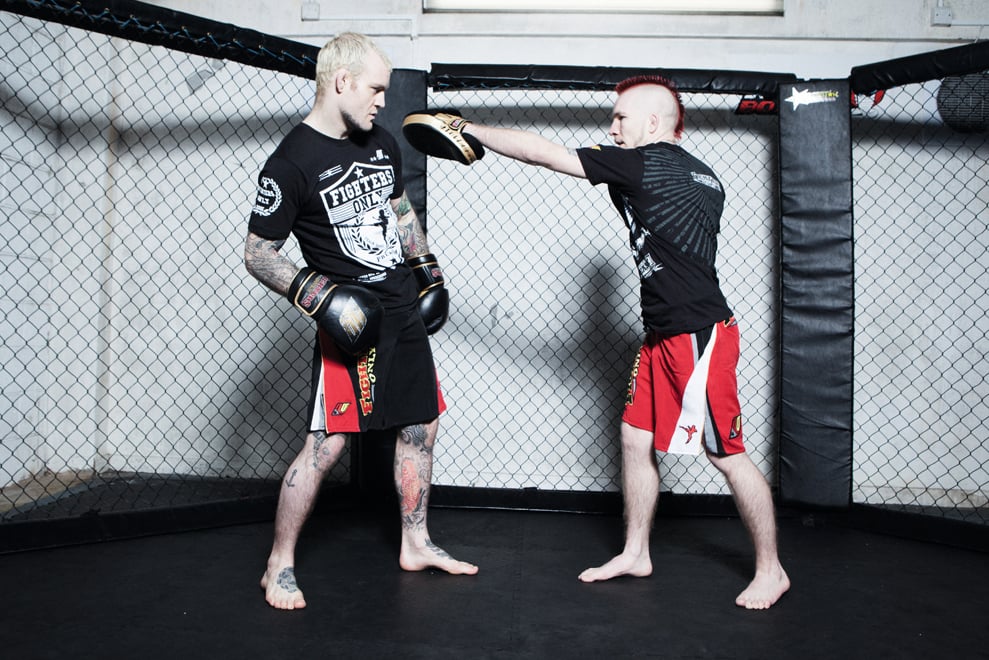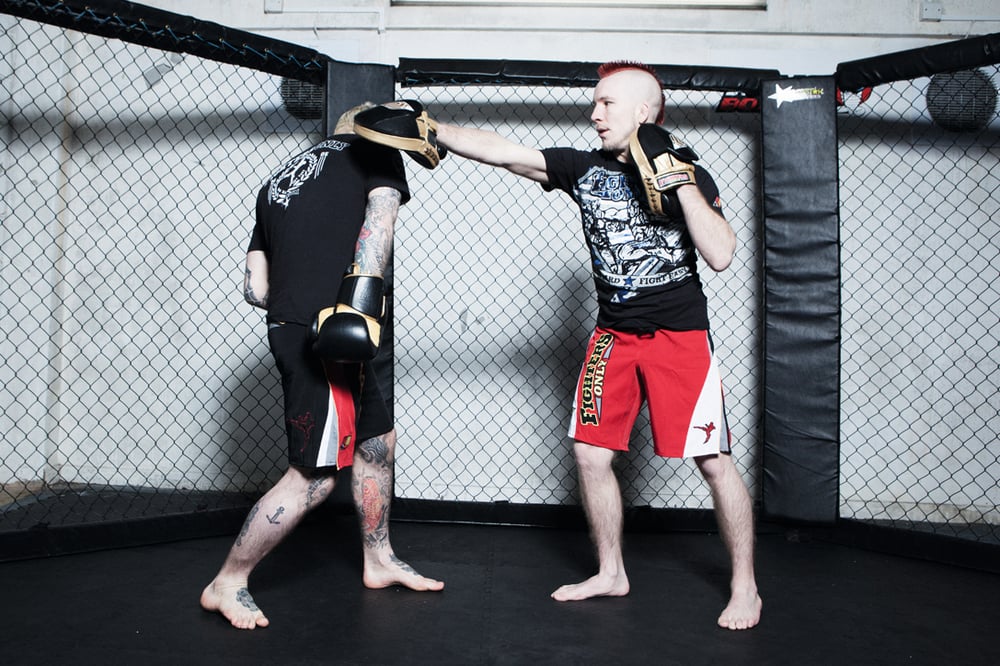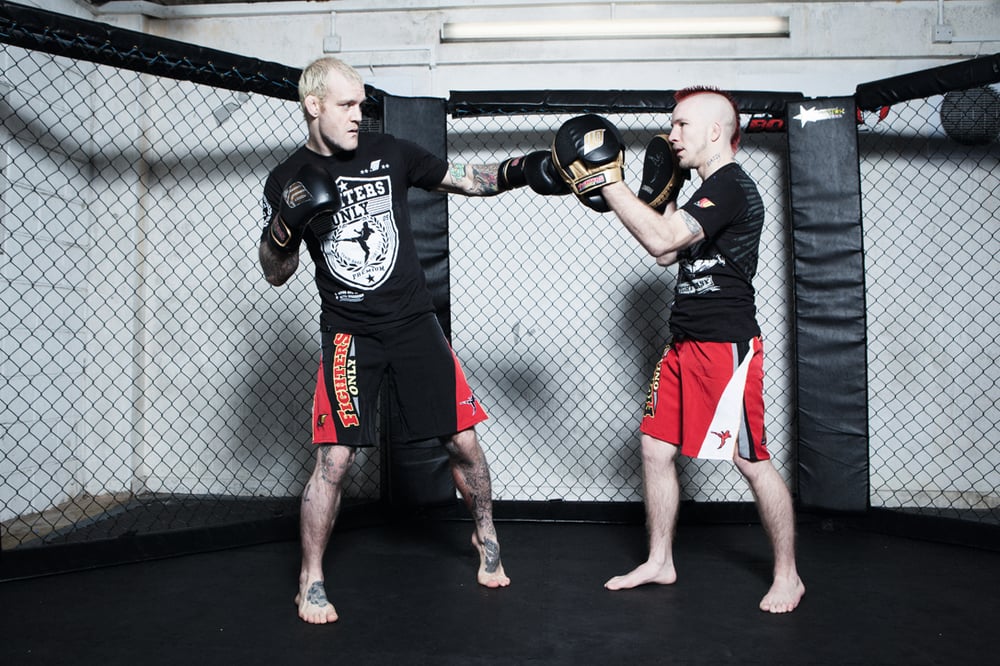
Issue 103
July 2013
Learn how to apply the masterful Muay Thai of the UFC middleweight champion to your fight
Widely considered the pound-for-pound number-one in MMA, Anderson Silva has ruled the middleweight division since his appearance in the UFC in 2006. Although Anderson is a Nogueira brothers black belt with extraordinary ability in Brazilian jiu-jitsu, it’s his unique style of Muay Thai that has truly made him feared and respected by fans and peers.
THAI CLINCH
Anderson is one of the best, if not the best, exponent of the Thai clinching technique in MMA. Levering the crown of the head down and throwing the straight knee to the body and head is the common attack. As the opponent reacts to defend themselves – putting the hips in, changing counter tie-ups or covering up – Anderson applies a twist to the neck and changes the angle of the knee to take advantage of the new openings.
THAI CLINCH: GRIP SPECIFICS
1. The most important detail to note is to control the crown of the head. A strong opponent will resist a grip on the neck, but placing the palms over each other above the crown will guarantee that even the strongest opponent succumbs.
2. Sometimes the gloves can make gripping one hand over the other more difficult, causing space between the elbows and loosening the control. If the elbows are loose the opponent will be able to counter by simply bodylocking with double underhooks. An alternative is to leave one hand on the crown of the head and place the other on the wrist, allowing you to squeeze your elbows.
EXAMPLE: VS RICH FRANKLIN, UFC 64, 2006
At UFC 64 Anderson’s destruction of undisputed 185lb champ Rich Franklin from the Thai clinch was nothing short of shocking at the time. When he rematched Franklin (UFC 77) and once again dominated him from the same tie-up, ‘The Spider’ proved beyond doubt that he was utilizing high-level technique previously unseen in MMA.
FRONT KICK
The Muay Thai front kick, or teep, is delivered with the ball of the foot, and aimed at the front of the thigh, the stomach, sternum, or, as Anderson has made famous in MMA, to the face.
1. Ensure the pads are held doubled up to receive the force of the teep.
2. Raise the lead knee first, above 90 degrees.
3. Extend the leg.
4. Drive the hip forward and push the ball of the foot through the target, as though pressing an accelerator.
5. Retract down the same trajectory.
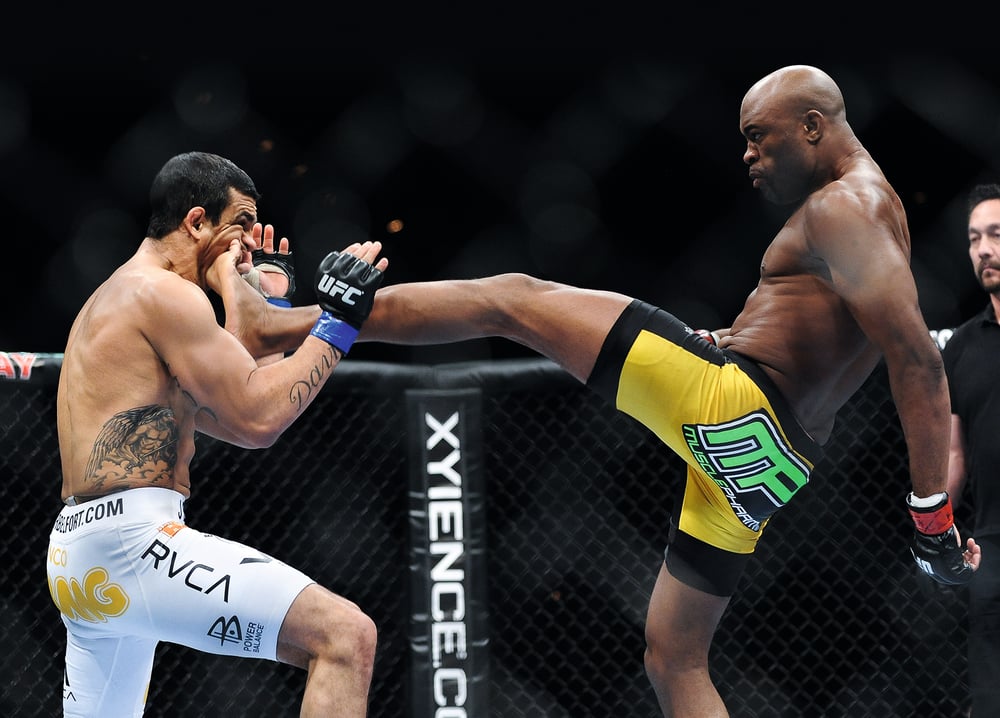
EXAMPLE: VS VITOR BELFORT, UFC 126, 2011
Take a look at Silva versus Belfort. Switch hitter Anderson (fighters who can change from orthodox stance to southpaw) adopted a southpaw stance, mirroring lefty Belfort. Anderson threw the front kick from his back leg, striking Belfort flush in the face and dropping him to the mat. A few punches from above secured the knockout victory for the champion.
HEAD MOVEMENT
Anderson’s ability to predict the movements of his opponents seems, at times, supernatural. Often Anderson spends the opening stanza of the fight moving around, avoiding his foe’s attacks, testing and probing for weaknesses, finding clues that allow him to anticipate his opponent’s reactions. Once he has done his research, Anderson steps up a gear, deconstructing his opponents with his pinpoint accuracy with hands and elbows, feet, shins and knees.
EXAMPLE: VS FORREST GRIFFIN, UFC 101, 2009
Anderson’s incredible reactions and ultra-relaxed style were perfectly demonstrated when he faced Forrest Griffin. Anderson lured Forrest in with his hands low, slipping and pulling back from punches. As Griffin rushed forward, Anderson felled him with a choppy right straight that Forrest ran directly on to.
...



